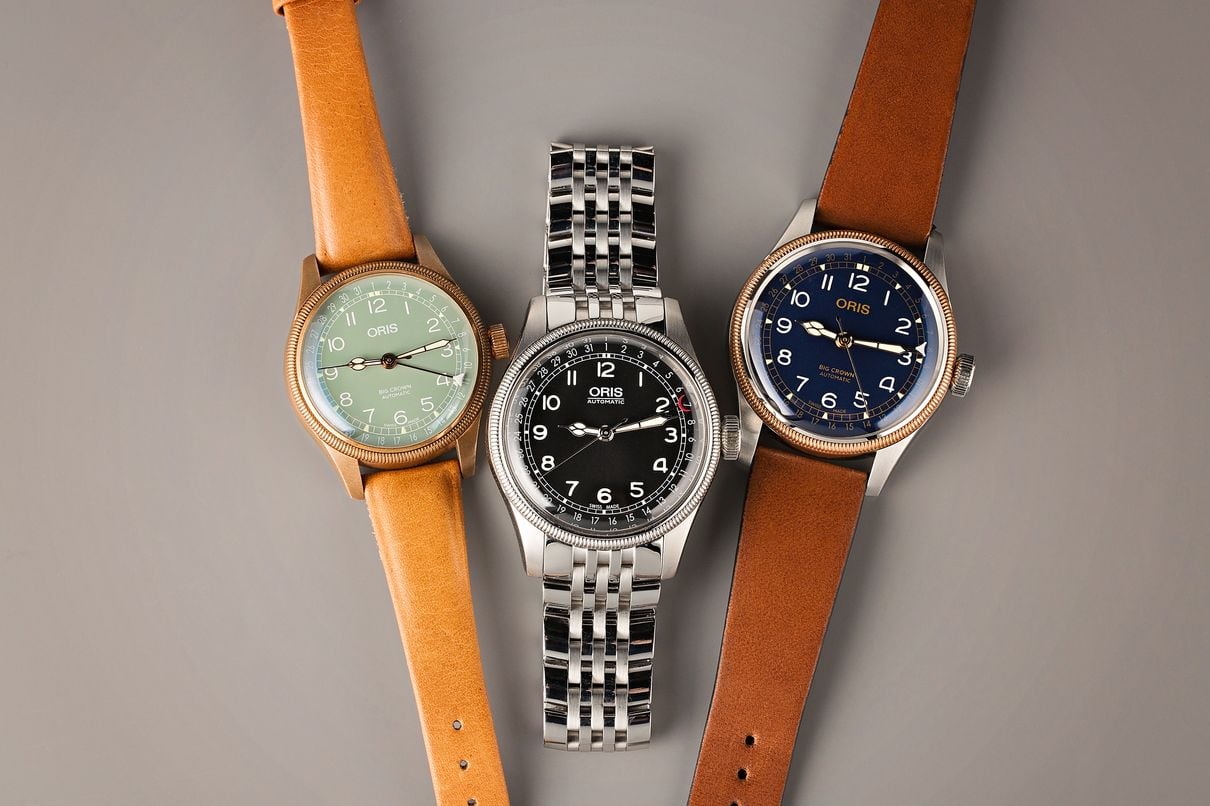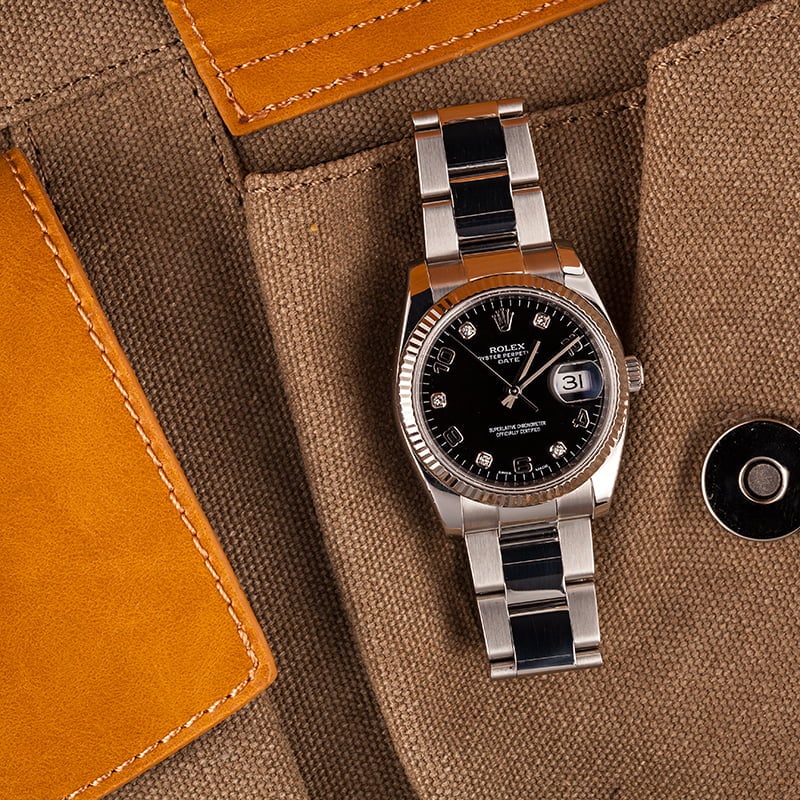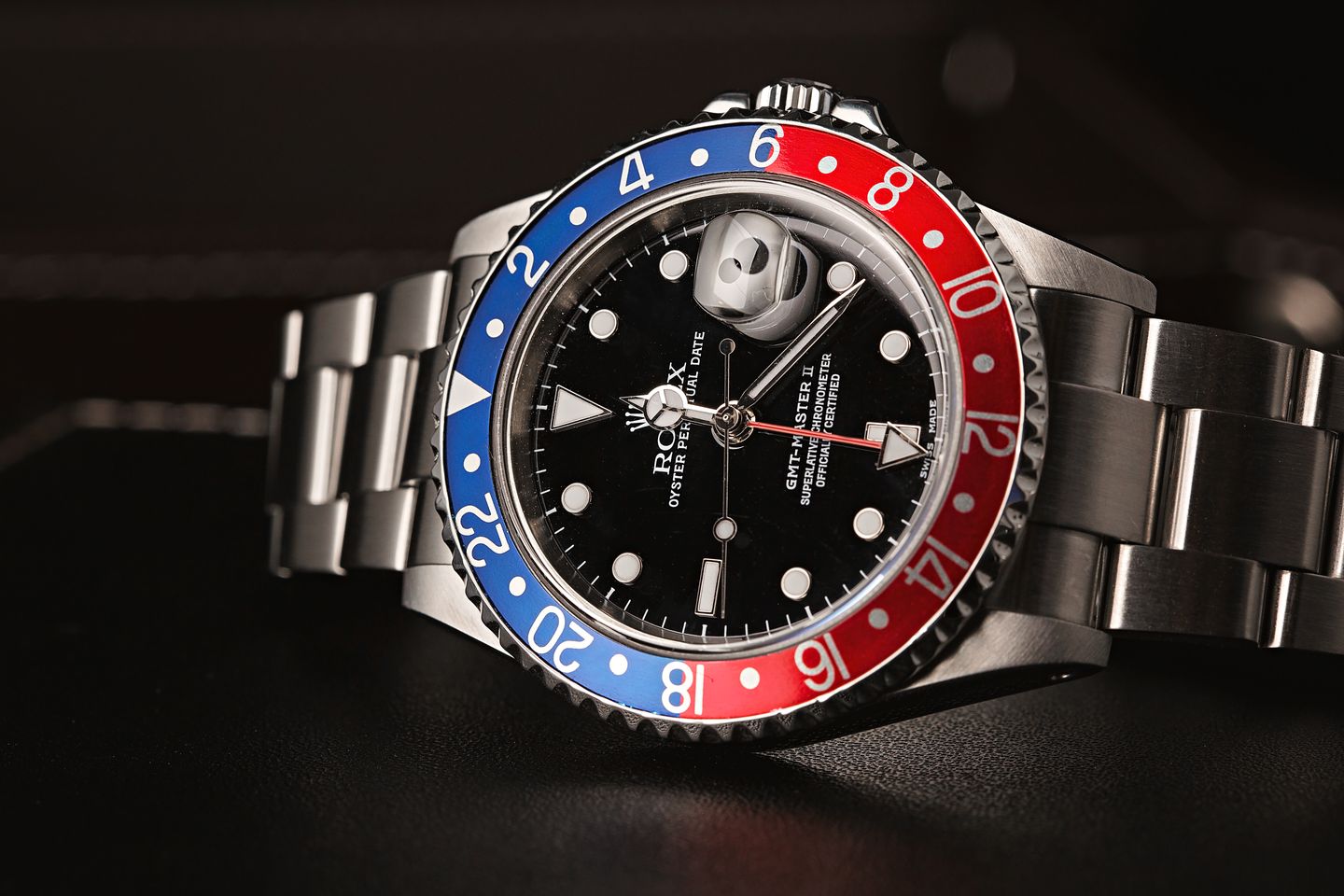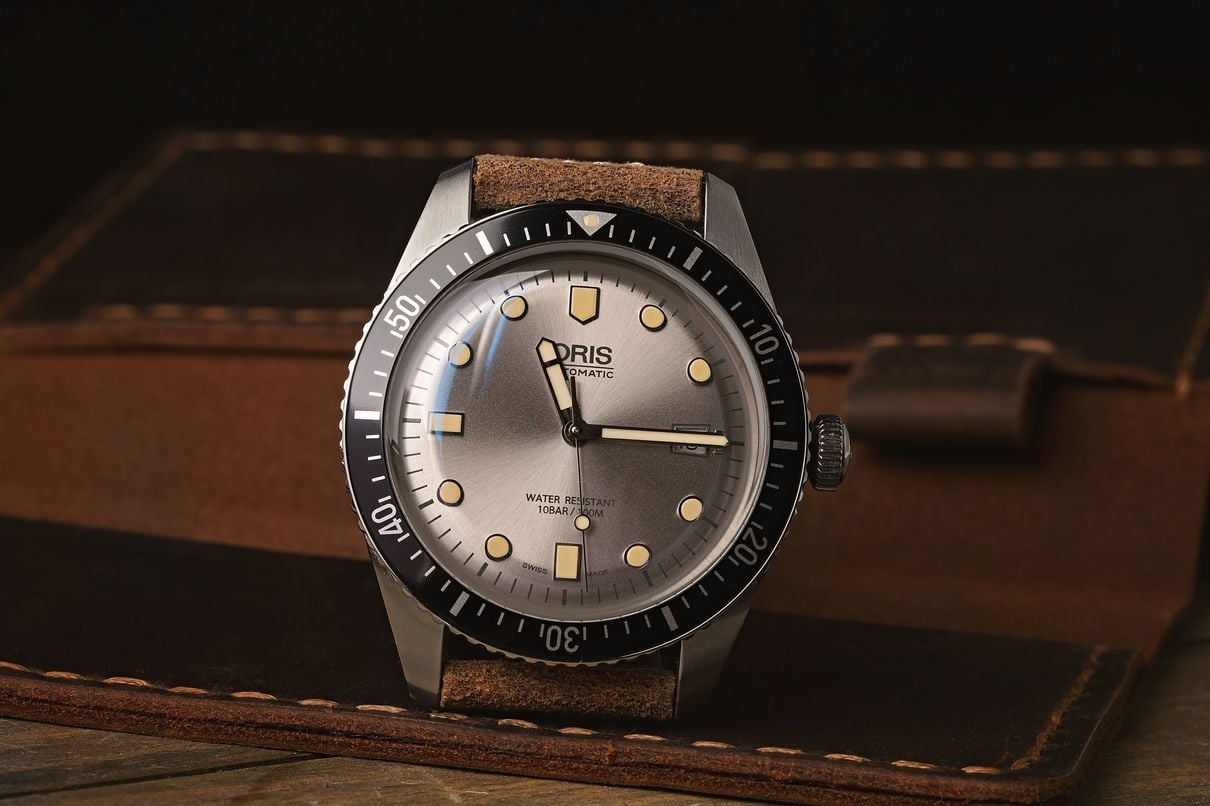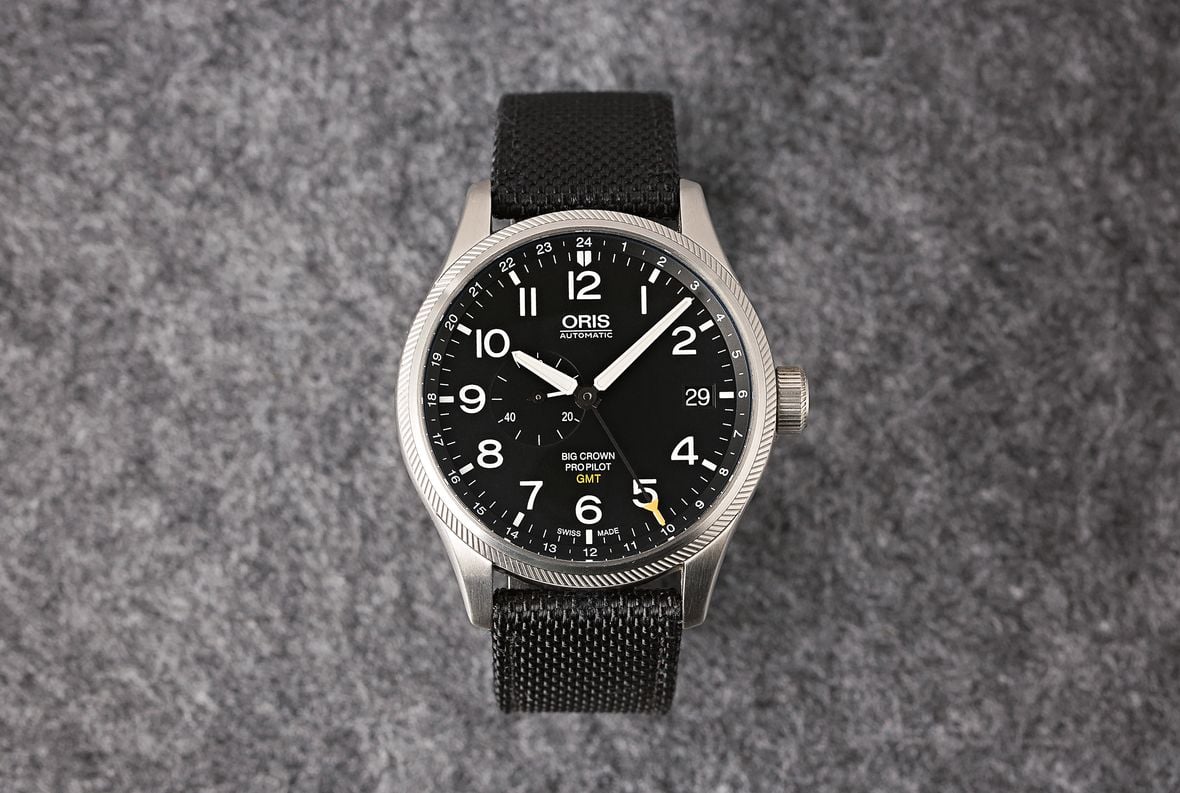It is often the simplest things in life that prove the most useful, and sometimes it is an unusual take on a classic – like the pointer date complication found on many Oris watches – that capture our imaginations the most. Modern mechanical watches can now incorporate a range of functions, (known as complications), which are truly stunning in their complexity. But in the real world, the likes of moonphases, regatta countdowns, minute repeaters, and tourbillons have a fairly limited utility. However, one of the humblest, and oldest additional features – a date display – is something that all of us would realistically use on a day-to-day basis.
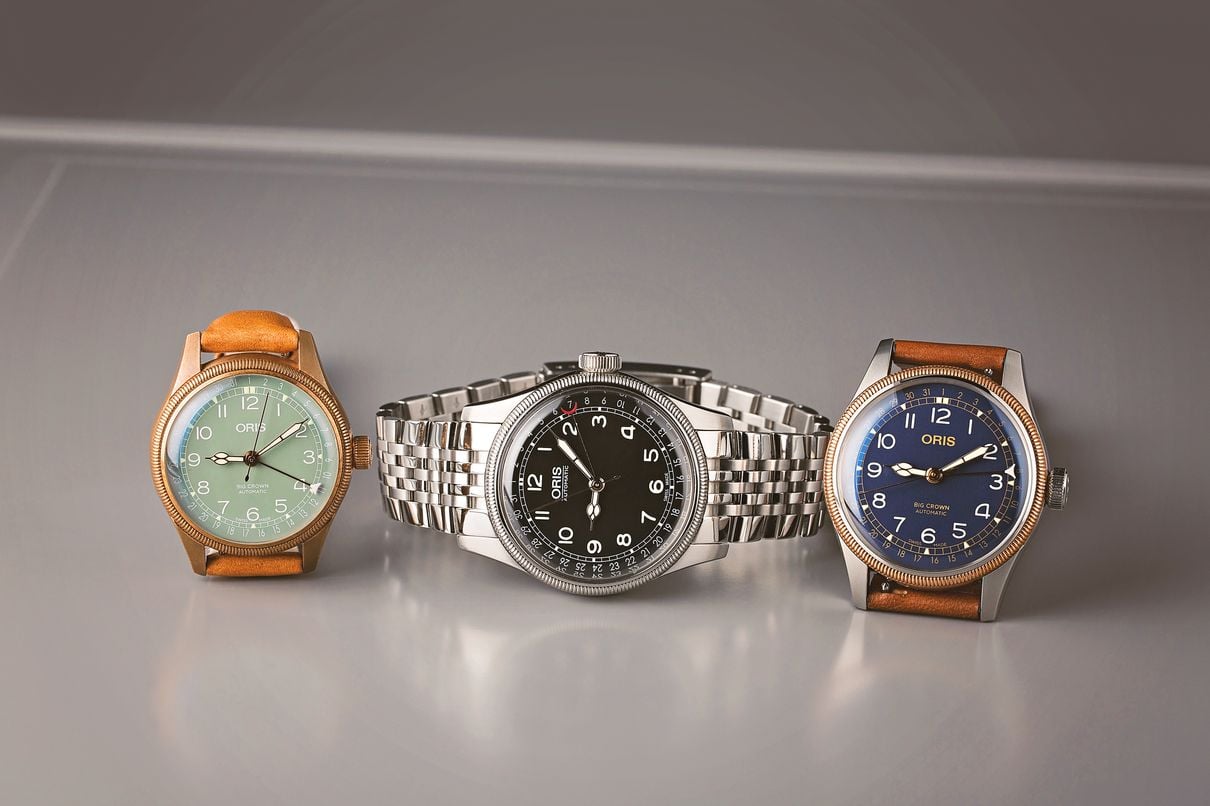
Pocket watches incorporating a calendar complication initially emerged as early as the 19th century, but it wouldn’t be until 1915 that the first patents were filed for a date-equipped wristwatch. That was the year horologist A. Hammerly devised two different methods for showing the day of the month. He operated out of the La Chaux-de-Fonds region of Switzerland, now a UNESCO World Heritage site and home to brands such as Girard-Perregaux, Breitling, Tissot, and TAG Heuer. The first movement Hammerly invented provided the approach we are most familiar with today, showing the date numeral through a small window on the dial. It would go on to become immensely popular, used originally on watches from the likes of Movado and Girard-Perregaux themselves with their Mimo-Meter. Of course, it would find eternal fame after Rolex released the Datejust in 1945, improving on the earliest examples by bringing in the instant changeover at midnight.
However, the aperture in the dial, and especially those covered with magnifying lenses (such as the case with Rolex), has long had both fans and critics. Sitting in their most usual position at the three o’clock (chosen so they peek out from beneath a shirt sleeve so the whole watch doesn’t have to be in view to read it) many people feel they throw off the overall balance and symmetry and would rather have a watch without the date display altogether as a result. However, Hammerly’s other innovation from 1915 gets around that issue and does so with a genuine elegance. Rarely ever featured on contemporary timepieces, there are a mere handful of manufacturers who produce the pointer date complication, with many of the most notable examples being Oris watches.
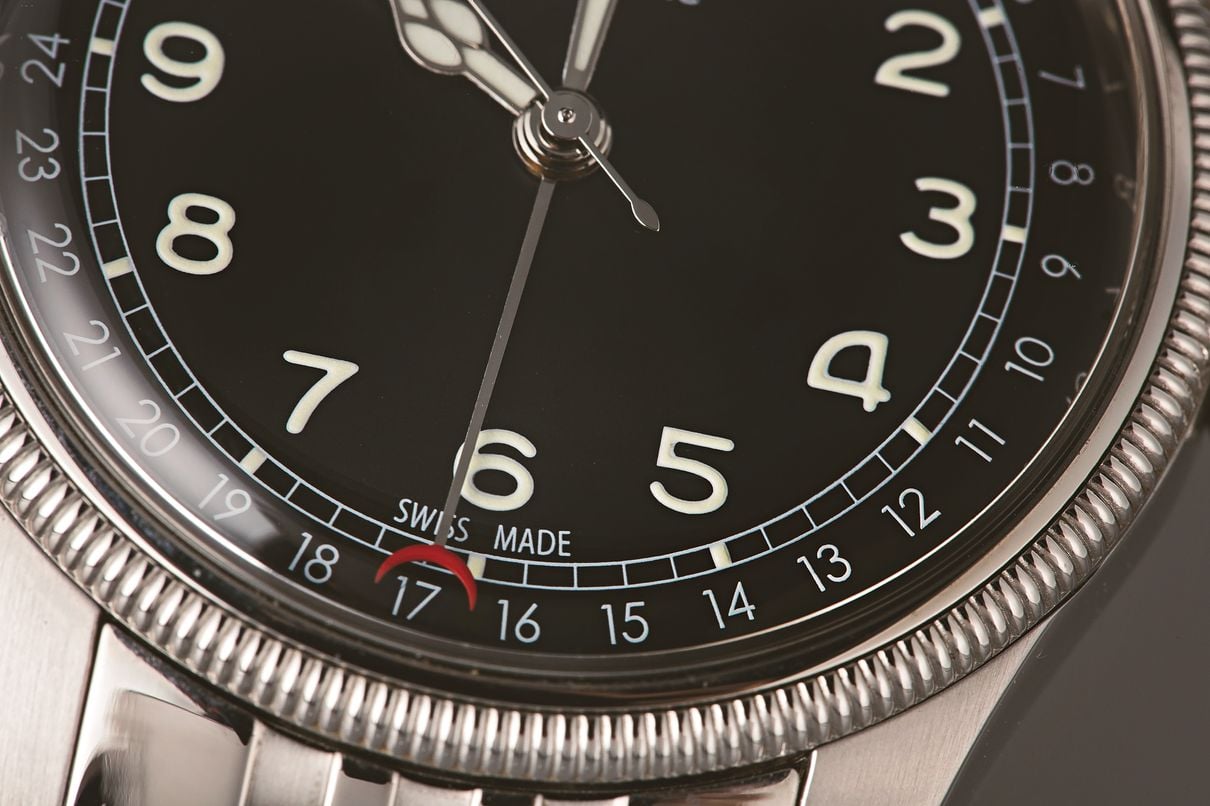
Oris Watches: What is a Pointer Date?
For those not familiar with what a pointer date complication looks like, this is one of those instances when the name does a pretty good job of summing it up. Much like with several GMT models, pointer date watches make use of an additional, centrally-mounted hand. On GMT watches like the Rolex Explorer II, the extra hand indicates a second time-zone by pointing to a numeral on the bezel; however, on pointer date models, it instead aims at a specific day of the month, usually printed along the dial’s outer edge. In that way, the balance of the dial isn’t broken up and the aesthetics remain largely untouched.
The Swiss brand Oris was among the earliest champions of the method, releasing a range of pointer date pieces in the 1930s, with the complication actually being fairly widely-used across the rest of the industry too. However, it was a style that ultimately fell out of favor relatively quickly after that, for two main reasons. First, regardless of its impact on the balance of the dial, a traditional calendar display with its small date window is slightly easier to read than a pointer date complication. The second reason, and likely the one that explains why there are so few pointer dates on modern watches is that the pointer date complication is more expensive to produce.
The additional manufacturing costs of the pointer date complication makes it all the more impressive that Oris reintroduced the complication into their portfolio in the 1980s, given that one of the company’s biggest selling points has always been their extremely reasonable pricing structure. In fact, at that time, it was the only mechanical watch they made as they fought to survive the quartz crisis. The current Oris lineup has more than 60 models that use a date pointer complication, appearing in a variety of forms, spread across their different collections.
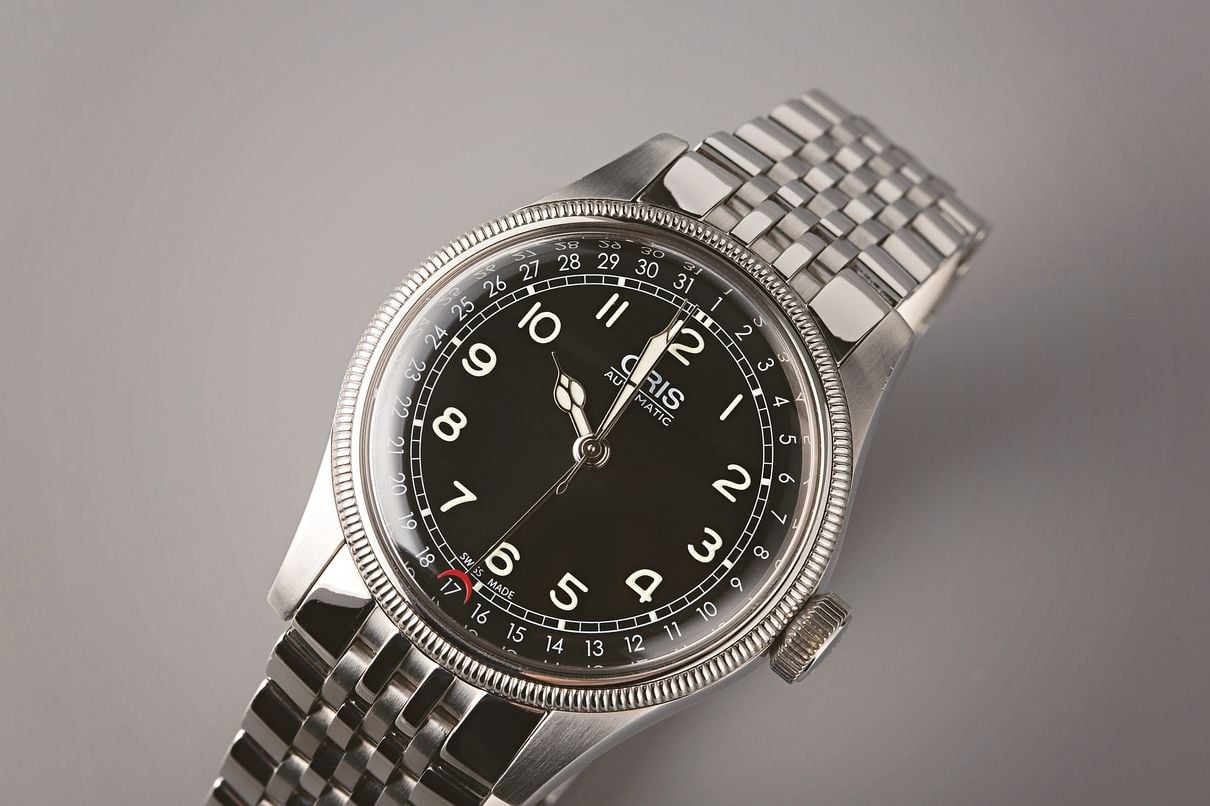
The Big Crown Pointer Date
The Oris Big Crown collection is among the most comprehensive of all – a reimagining of the vintage pilot’s watches on which the brand originally founded much of its reputation. The Big Crown Pointer Date is an unapologetically retro throwback to the first of its kind from the manufacturer, with its coin-edge bezel, historically accurate fonts, domed crystal, and titular oversized winding crown. Available in either a 36mm or 40mm size with a selection of different dials, the date scale sits along the periphery like an outer minute track, and the pointer hand is needle-thin and topped with a contrastingly colored triangle.
There are also several variations on the theme, with the older series having the days printed around the center of the dial, while the Big Crown Small Second Pointer Day has a standard date aperture at the three o’clock and just the days of the week indicated with the extra pointer hand. A sub-dial for the running seconds sits at the nine o’clock location and acts as a welcome corresponding counterpoint.
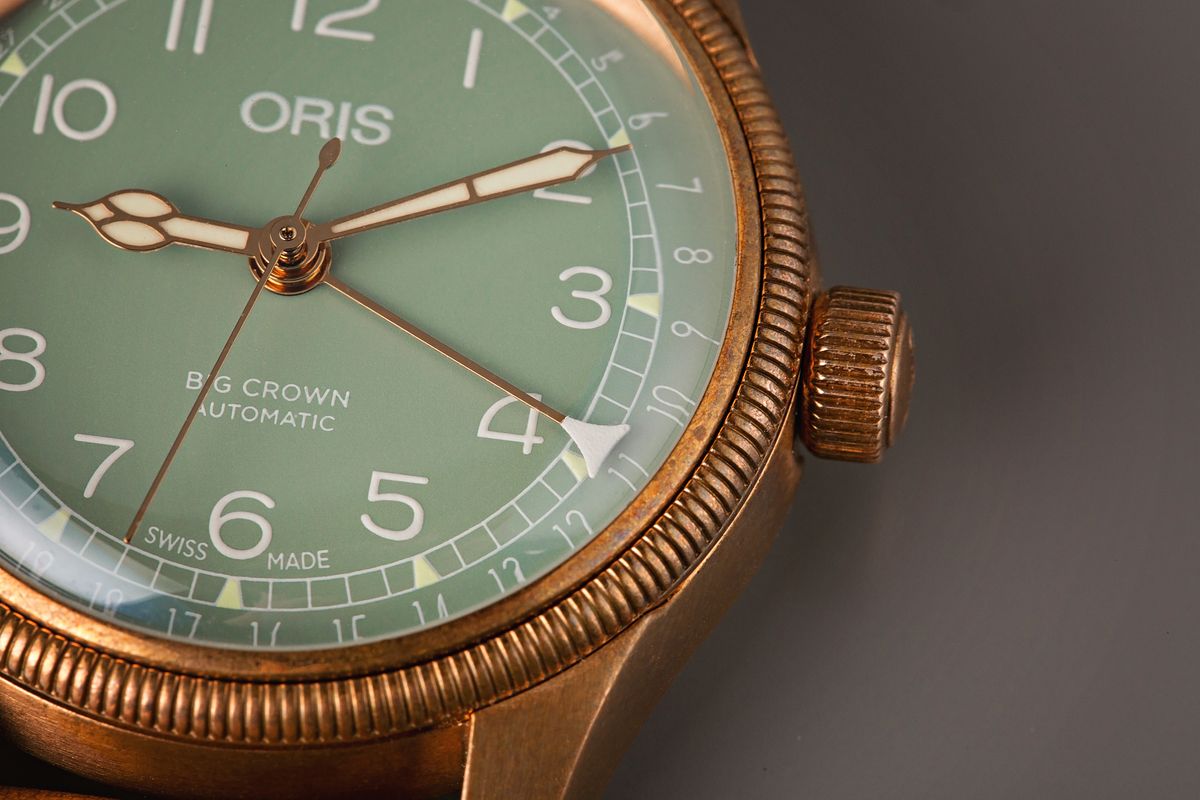
The Oris Artelier
Oris dress watches also have a number of examples that mix the customary date display alongside a pointer. The Artelier Pointer Day-Date is a beautifully graceful 40mm timepiece, featuring the small aperture sitting inconspicuously just above the six o’clock index, while the days of the week are again arranged around an inner disc, with a red arrow-tipped hand pointing to them.
Perhaps most impressively, with Oris beginning production of their own movements again in 2014 after a break of roughly 35 years, one of the first to receive an in-house engine was the Artelier Calibre 113. A triple calendar, it has the day and date displayed in separate windows (at the 12 and 9 o’clock respectively) and the months inscribed around the edge of the dial with the same style of hand (except longer) picking them out. The manually-wound movement also has an incredible 10-day power reserve and is given a large gauge on the right side to tell you when its time to wind the watch again.
Oris is one of those under-the-radar brands in the industry that quietly goes about its business of doing some really interesting stuff, and representing great value for money while doing it. The brand’s range of pointer date watches is unlike anything that you will see elsewhere produced on nearly the same scale and with so much choice available to buyers. Smart, stylish, and versatile, Oris pointer date watches are definitely worth exploring if you want your wrist to stand out from the crowd.
